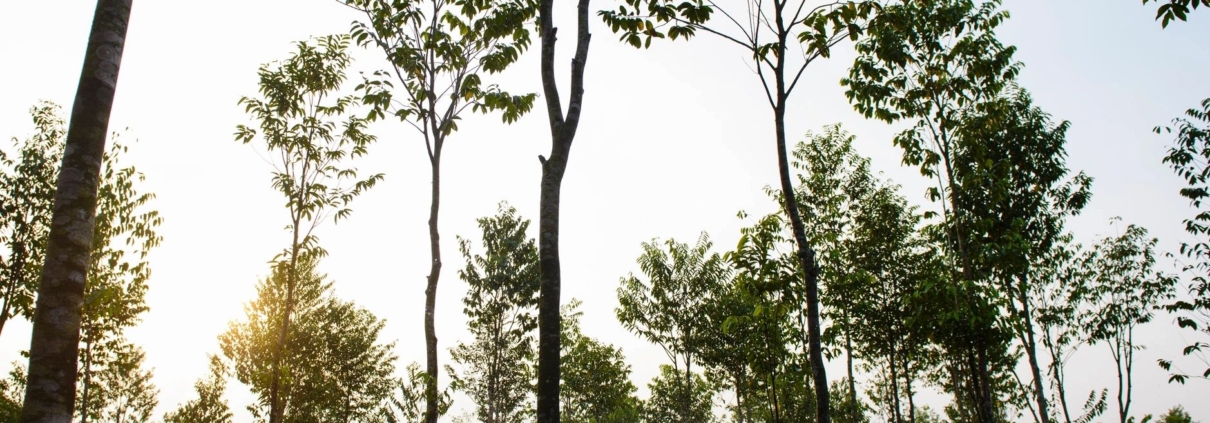Alabama sees its fair share of tornadoes, violent thunderstorms, and hurricanes each year. Weather like that may have you keeping an eye on your neighbor’s trees, concerned that one of the branches could fall and damage your property. So, what are your rights?
There’s a tree on my neighbor’s property with limbs that extend onto my yard. Can I cut the branches down?
Yes, although it would be a good idea to speak to your neighbor before you get out the chainsaw.
In general, you have the right to control what is on your property, including tree limbs and even roots. So, you can cut down tree limbs up to – but not past! – the point of your property line.
However, you should consider speaking with your neighbor before taking action. You may be able to come to some agreement as to how the tree should be dealt with and avoid any headache or heartache for either of you.
Note that if your tree maintenance involves digging or excavation you will need to call 811 at least two working days before you start your project.
Can I cut down a tree that is on the boundary line of my property?
If a tree trunk is on a boundary line then each neighbor owns the tree and all owners of the tree must give consent to any action taken with respect to the tree. So, if a tree is on a property line that you share with your neighbor, you must get his or her consent before you cut it down.
On the other hand, if the tree trunk is entirely on your property then you can probably cut it down without consulting your neighbor. We say “probably” because there is a chance that excavating the tree could cause damage to your neighbor’s property. You will want to carefully consider the consequences of removing a tree and its roots. Will removal of the rootball cause erosion that could flood your neighbor’s land or lessen support for a wall or structure on your neighbor’s property?
Am I responsible if my tree falls on my neighbor’s property?
MAYBE. If your tree falls and causes damage to your neighbor’s property then you could be held liable, even if the tree fell due largely to an act of nature such as a tornado.
But don’t worry! You can avoid liability by acting responsibly.
Check out these examples:
Example #1: , Say you have a tree in your yard that is clearly dead. It’s ugly, has rotten branches that are barely hanging onto the trunk, and your neighbor is constantly begging you to cut it down. One night during a rainstorm, a gust of wind knocks a branch off of the tree and through your neighbor’s roof, causing damage. Because you negligently failed to cut down the dead tree even though you knew it was in bad shape, you could potentially be held liable for the damage.
Example #2: Imagine that you have a beautiful, healthy tree on your yard with branches that extend over your neighbor’s property. The tree is in great shape, but nevertheless it is uprooted one day during an F5 tornado and falls onto your neighbor’s house. In such a case you would not be held liable for any damage because there was nothing you could have done to prevent a catastrophic tornado from uprooting your healthy tree.
In other words, the answer to this question will depend entirely on the facts of the situation. An experienced attorney can assess your particular situation.








